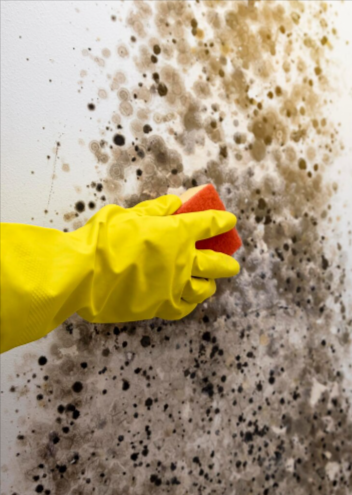Mold often grows without warning. It hides behind walls, under carpets, or in damp corners of your home. Many people don’t even know it’s there until they start feeling sick. A professional mold removal inspection helps find these hidden threats before they can affect your family’s health.
Mold grows fast in damp areas. It releases tiny spores into the air. You can breathe these in without knowing, which can lead to coughing, sneezing, skin rashes, or breathing trouble. If someone in your home has asthma, mold can make it worse. Getting your home checked by a mold expert helps keep your space safe and clean.
Why Mold Grows Inside Homes
Mold needs three things to grow: moisture, warmth, and something to feed on. This makes many homes the perfect place for mold. A leaking pipe, roof damage, or even steam from showers can cause mold to grow over time.
Mold grows in places you may not check often. Basements, crawl spaces, and attics are common spots. If you’ve had flooding, even a small one, mold might be forming without you seeing it. Without the right check, it may keep spreading without being noticed.
Health Problems Mold Can Cause
Not everyone reacts to mold the same way. Some people get mild symptoms, while others feel worse. Here are some health problems mold can cause:
- Stuffy nose
- Itchy eyes
- Skin rashes
- Coughing or wheezing
- Sore throat
- Headaches
People with weak immune systems, like babies, older adults, or anyone with long-term illness, can feel the effects more strongly. If someone in your house keeps getting sick and you can’t figure out why, mold might be the reason.
What a Home Mold Check Looks Like
During a home mold check, a trained expert visits your home to look for signs of mold. They start by asking you about any leaks, damp smells, or past water damage. Then, they carefully inspect every part of the house—especially areas that tend to stay damp.
Some inspectors use tools to check moisture levels in walls and floors. Others may take air or surface samples to test in a lab. These tests help confirm the type of mold and how much is present. The inspection often ends with a report showing where mold was found and what to do next.
Why Home Test Kits Aren’t Enough
You might think about using a store-bought test kit. While these kits are cheap, they don’t always tell the full story. Many can give false results. You might miss hidden mold or fail to test the right areas.
Only a trained professional knows where to look and what tools to use. They know how to safely check crawl spaces, behind walls, and under floorboards. A full inspection can spot the root of the problem and help you take real steps to fix it.
Catching Mold Early Saves Time and Money
If mold stays in your home for too long, it can cause serious damage. It eats through wood, drywall, and insulation. You might have to replace large parts of your home if the problem spreads.
By catching mold early, you avoid costly repairs. You also protect your family from breathing in mold spores daily. It’s better to spend a little now on an inspection than deal with bigger issues later.
Places Mold Loves to Hide
Even if your home looks clean, mold could still be hiding. Here are some common places it can grow:
- Behind bathroom tiles
- Under kitchen sinks
- In basement corners
- Around leaky windows
- Inside walls with old water damage
- Around HVAC vents
These areas often stay warm and moist, making them ideal for mold. A trained inspector checks all these spots, not just the ones you can see.
What Happens After the Inspection
Once your home has been checked, the inspector will tell you what they found. If there is mold, they will recommend the best way to remove it. This could mean simple cleaning, or a full mold removal job for larger problems.
They might also suggest ways to stop mold from coming back. Fixing a leak, using a fan, or getting a dehumidifier can make a big difference. The goal is not just to get rid of mold, but to stop it from growing again.
Easy Tips to Keep Your Home Mold-Free
Preventing mold is easier than removing it. Here are some things you can do every day to keep your home safe:
- Fix leaks as soon as you see them
- Use fans when cooking or showering
- Keep windows open on dry days for airflow
- Don’t let clothes or towels stay damp for long
- Wipe down bathroom walls and floors after use
- Check for signs of water damage every season
These small steps can stop mold from starting in the first place. A dry home is a safe home.
Protecting Your Family
Your home is where you and your family should feel safe. Mold can change that. A mold removal inspection helps find and stop the problem before it affects your health. By finding hidden mold early, you protect your family, save money, and stop the damage from spreading.
If you’re ready to take this step, MSN Environmental offers reliable help. Their team knows how to inspect your home the right way and give clear advice on what to do next.
